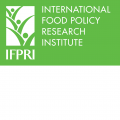
The COVID-19 pandemic has hit the global economy hard, and in many places other factors—such as the locust invasion in East Africa and falling export commodity prices—are compounding its effects. FAO Chief Economist Maximo Torero observes that no modern economy has experienced anything like the combination of the Great Lockdown and the worst recession since the Great Depression, and that these could trigger a global food crisis—with Africa south of the Sahara especially vulnerable. He lays out a series of policy prescriptions that can help keep millions from starvation and fortify food systems for a post-pandemic world.—Johan Swinnen, series co-editor and IFPRI Director General.
With a devastating one-two punch, a supply shock followed by a demand shock, the COVID-19 pandemic has knocked out the world economy. The first blow was the Great Lockdown; the second, the worst recession since the Great Depression. No modern economy has experienced anything like this. As the spread of the novel coronavirus debilitates people’s ability to harvest and buy and sell food, food systems are under threat as never before.
It’s thanks to producers and workers across the food supply chain that food continues to move from where it is produced to where it is needed, logistical delays notwithstanding. Countries have shown restraints, too, as most of them didn’t jump to restrict food exports. In fact, the number of pandemic-related export restrictions has decreased from 18 to seven, representing less than 1% of the share of global food trade.
But the lockdowns have triggered a steep recession. The World Bank projects the global economy to shrink 5.2% this year. The IMF’s latest projection is –4.9%. The OECD is forecasting a 7.6% contraction, given a second wave of infections before the year’s end, and a very slow recovery of 2.8% in 2021. In both rich and poor countries public debt is soaring and is expected to exceed the post-World War II peak.
A collapse in demand for food due to lack of income and disruptions to local food markets indicate important vulnerabilities, as shown in Figure 1, and could prompt a global food crisis. Hunger and malnutrition were significant global problems even before the pandemic. More than 2 billion people didn’t have regular access to safe, nutritious and sufficient food last year. Some 704 million of them went to sleep on an empty stomach; this included 135 million people who were on the edge of starvation.
Maximo Torero is the Chief Economist and Assistant Director General for Economic and Social Development at the U.N. Food and Agriculture Organization in Rome.
